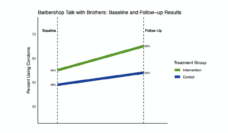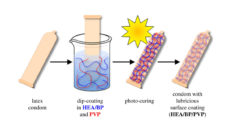In 2019, the CDC recorded 2.5 million reported cases of chlamydia, gonorrhea and syphilis in the United States. These diseases are sexually transmitted infections (STIs), which have increased 30% between 2015 and 2019, reaching an all-time high. With the number of cases of STIs continuing to increase, if such data were publicized, we might expect an increase on condom use as well. However, researchers have found a decrease in condom use habits for men with STI risk factors, which may be contributing to the rapid increase of STI cases.
One of the most successful ways to prevent STIs is correct and consistent condom use, especially among populations at a high risk. Casey Copen et al. (2020) analyzed whether condom use was different for men with STI risk factors compared to men without STI risk factors such as partner non-monogamy, male to male sex, sex in exchange for money or drugs, a sex partner who injects drugs, or having an HIV positive sex partner. The researchers focused on men aged 15-29 who have sex with women.
They found that among men with STI risk factors condom use decreased between 2002 and 2017. In 2002, 53.2% of men with STI risk factors reported wearing a condom during their last sexual encounter. In contrast, between 2011 and 2017, only 44.2% of men with STI risk factors reported condom use. The decline in condom use was more prominent for young men aged 15 to 19 and for White men. Condom use for men without STI risk factors remained consistent or increased slightly during the study period.
The findings of this study indicate that the increase of STIs in the United States may be partially attributed to changes in condom use trends among men with STI risk factors who have sex with women. In addition, the data that researchers used does not include homeless or incarcerated populations, both of whom have high rates of STIs, so these figures may be underestimates. Understanding the barriers to condom use among key populations is crucial for developing STI prevention strategies.
A study by Jenny Higgins and Yu Wang found that reasons for not wearing a condom are often related to pleasure. Condom use is associated with reduced sexual pleasure, especially among men. Another study by Val Wongsomboon and David J. Cox (2021) found that greater arousal was associated with unprotected sex for both men and women, and this association is stronger among men.
While rates of STIs continue to increase, condom use among men with STI risk factors who have sex with women has declined. In order to properly prevent STIs, we need to continue to research and understand the reasons behind inconsistent condom use among men with STI risk factors who have sex with women.
Photo via Getty Images














